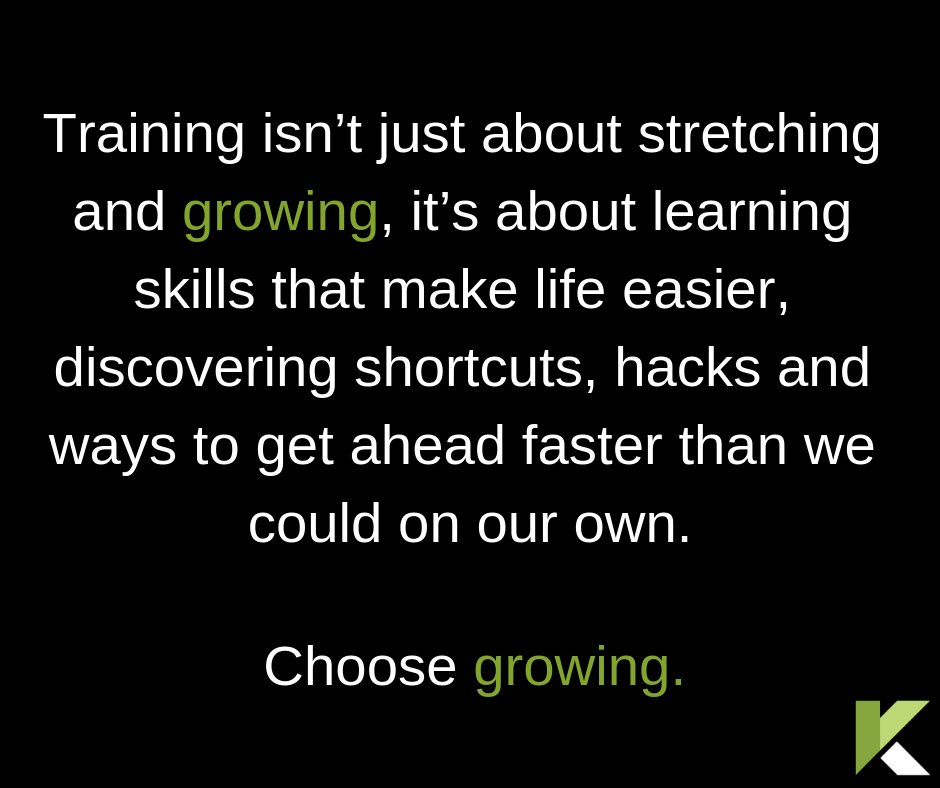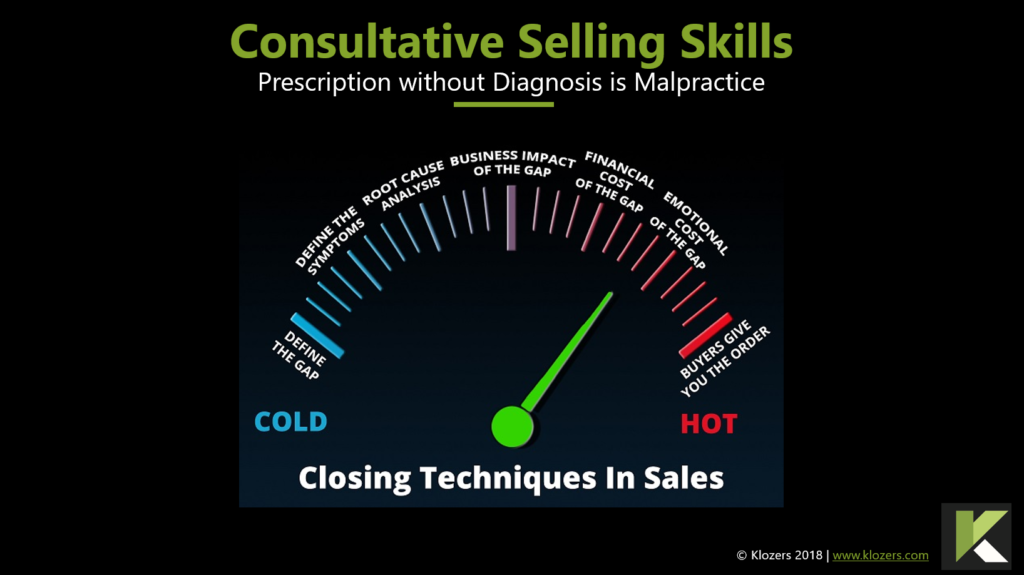Sales Training and Consulting for B2B Companies
Why invest in Sales Training and Consulting?
There are normally two reasons companies invest in our Sales Training and Consulting services. Firstly, they are often in a hurry to find sales growth and are looking for a short cut, a growth hack.
Often these companies would eventually find the right strategies and tactics themselves, but they may be keen to capitalise on their first mover advantage or satisfy the needs of external investors.
For these companies we provide a shortcut, we help them avoid the pitfalls and roadblocks that every growing business experiences.
When you engage with Klozers your team has access to over 70 years experience in B2B sales and marketing.
Our sales training can help you get the best out of your team, alongside our consultancy services that will help you deploy the changes identified by our consultancy
Let’s take a closer look at why it makes so much sense to use sales training and consulting services together.
1. Why sales consulting compliments your sales training?
Many companies make the mistake of rushing into training as the solution to improving sales performance.
Indeed, training may be part of the solution, but it is never the whole solution. Before any training takes place it’s important to understand the root causes of the challenges within the sales department and only when we truly understand the problems can we prescribe the best possible solution.
By rushing into training we would be assuming that everything else that affects sales is 100% perfect, and that is simply never the case.
As with anything, the greater the investment upfront in terms of the diagnosis, the more effective the training will be.
This is because the training can then be customised to meet the exact needs of the business which makes it much more impactful.

2. Why is Sales Training so effective?
Sales training builds both skills and confidence, and those are simply unbeatable in front of a customer.
The best salespeople are like athletes and they are hungry to learn more and stay at the top of their game.
The reason they are so good is that they are constantly looking for an edge, an advantage, and this keeps driving them forward.
These are small but important things that make the difference and gets more deals over the line. Our training is designed to keep your team at the top of their game and help them benefit from the very latest insights and industry best practice.
Our sales trainers work hard to keep your team engaged and motivated during training sessions, using a range of mediums to maintain their attention and inspire them.
Your sales trainer will help your team sell more effectively whether that be over the phone, in-person or online.
They can help them improve their lead generation, closing and account management skills, and provide indispensable mentoring services.
3. What happens before training takes place?
Before your training sessions begin, it’s important to identify what you want to get from them. As a sales training provider we offer bespoke services that are based on your specific needs and challenges.
We can provide a full sales consultancy service in advance of any training. This would typically include an evaluation of your current sales unit in relation to sales maturity and best practice.
We can also provide full training needs analysis so you can gain a better understanding of your requirements before staring any training course.
For sales training to be effective, they need to be delivered in a way that maintains your teams’ attention, which means your sessions will include a great deal of interactivity.
Our sales training sessions include a range of demonstrations, exercises, games and roleplay.

4. What is the aim of Sales Training
Our goal as a provider is not to deliver sales training, but to deliver results.
Therefore we believe the goal of Sales training is to help you meet a range of sales goals faster than you would if you were to continue without any intervention.
Not every company’s needs are the same, but businesses often invest in sales training because they want to improve their staff’s sales skills, close more deals, create more conversions, make their staff feel more supported, improve morale and boost the average value of their sales.
However, ultimately all of these lead to one overall benefit – an improvement in results. Some companies invest in training because they have identified a particular problem that needs addressing which is being caused by a skills gaps within their businesses.
Training may also benefit your team if they seem to be lacking direction, or are feeling unmotivated. A lack of motivation can often occur because staff are unclear on what their roles are, or because the current strategies they are using are not working.
In many occasions this is why Sales consultancy is a perfect fit alongside sales training as it can also help you identify and deal with additional challenges.
5. How can a Sales Consultant help our business?
A sales consultant will help your business by taking a close look at your current situation, identifying strengths and weaknesses, and helping you make positive changes to drive revenue growth.
If you are not currently meeting your sales targets, our sales consultants can help you find out why this is happening and develop strategies to address the issues.
Our experienced consultants can help with optimising your sales processes and ensuring you get the maximum conversion ratios from the leads you are generating.
With our years of experience in B2B sales our sales consultants can introduce you to specific resources that will support your business.
These can include lead generation, marketing, sales tracking, and training programmes and software that will give you a better insight into how your sales team are performing.

6. Adding Sales Experience to your Leadership Team
When you are immersed in the day-to-day running of your company, it can be hard to assess your situation objectively.
It’s often impossible to find anyone around you who is not objective as your team all have a role which in some way will make them subjective.
Our sales consultants aren’t just there to identify problems that you weren’t previously aware of, we are completely hands on and happy to work alongside your team to implement any solutions.
Where applicable we will highlight your strengths and help you make the most of the resources that you currently have. In most cases this revolves around the creation of a sales plan, which we work with you to develop and if required are happy to help with executing against the plan.
Our consultants will work with you to help you improve relationships between departments and colleagues. For instance, we are often called upon for detailed advice on aligning sales and marketing departments so you’re delivering coherent messages to your customers.
Indeed aligning sales and marketing is one of our most popular services.
7. Which Companies benefit the most from Consulting Services
We typically have two types of customers of our consulting services. The first are larger organisations who already have a Sales Plan in place.
They need help executing and delivering against the plan as they simply lack the internal resources to do this themselves.
The second group are those looking for external and objective advice. In some cases they have seen a substantial decline in sales recently or aren’t meeting their targets they need to reach and hence are reaching out for support.
These businesses hire us because we have a track record of turning companies around. Alternately you may need external support if you have experienced changes in your industry and you’re struggling to keep up with your competitors.
Companies also may hire us because they feel missed sales targets are starting to affect morale and staff retention rates.
By investing in training and consultancy services, you can show your team you’re determined to improve and start achieving more.
8. Build a Selling System
It’s also common for companies to invest in sales consultancy services because their sales processes are confused and unclear, with team members pulling in different directions.
We are a huge advocate of having a selling system. Finance has a system, operations have a system so why not sales. Building a repeatable scalable selling system is simply a must for any business.
By mapping this out we can help your salespeople to understand how and where they can influence buyers and sell to people on different parts of their journey, helping you secure more sales.
Our consultants can also help you gain a richer understanding of the data available to you, from both your marketing automation and CRM platforms.
In many cases our clients either don’t have enough data or they are overwhelmed by data, and miss out on the most important parts. Either way we can help.
In Conclusion
Sales is an ever changing environment and more and more businesses are improving their performance, staff retention rates and workplace morale.
For most of use this means competition is tough and by investing in our sales training and consultancy services we can give you that edge you need to not just compete, but win.
Sales consultants and trainers can provide invaluable mentorship, help you identify and eradicate weaknesses, and help you make the changes that you need to not only survive but prosper.
Our team can breathe new life into your organisation and inspire people throughout your company. Whether you’ve been missing your targets or are simply ready to build upon recent success and take your business to the next level, there are many great reasons for hiring sales training and consultancy professionals.
If you are ready to hire a sales trainer, sales consultant or both, come and talk with us.













































